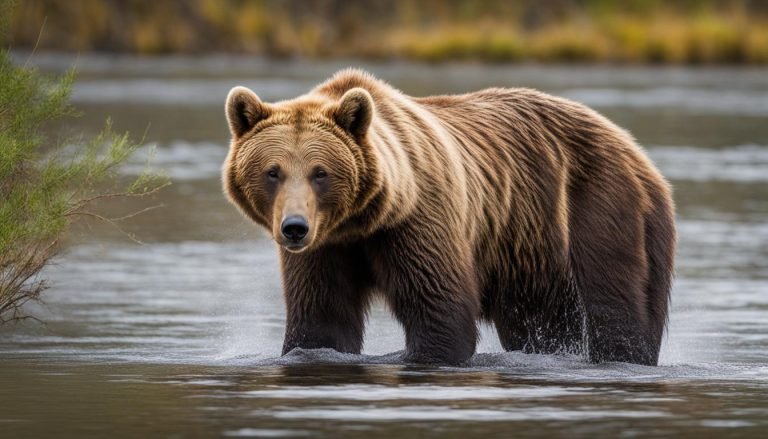Rabbit
From their long ears to their fast reproduction rate, rabbits are small mammals that captivate our curiosity. Belonging to the family Leporidae, these adorable creatures come in various sizes and species, each with its unique characteristics. In this article, we delve into the world of rabbits, exploring their size, habitat, behavior, hunting habits, mortality rates, and locations.
Size
Rabbits come in different sizes depending on their species. The average weight of a rabbit ranges from 2 to 11 pounds, with some larger breeds reaching up to 18 pounds. The dimensions of a typical rabbit are around 14 to 20 inches in length, excluding the tail, and they stand about 7 to 12 inches tall. It’s important to note that the size of a rabbit can vary based on its breed and individual genetics.
Habitat
Rabbits are adaptable creatures that can be found in various habitats, including forests, grasslands, deserts, and even urban areas. They have a remarkable ability to thrive in different environments, making them a widely distributed species. Rabbits prefer habitats with abundant vegetation and ample hiding spots, as these provide them with the necessary resources for survival.
Forest habitats: Some rabbit species, such as the Eastern cottontail (Sylvilagus floridanus), are commonly found in forests. They take advantage of the dense vegetation and forest floor to find cover and forage for food. Forests provide rabbits with a mix of grasses, shrubs, and tree bark.
Grassland habitats: Many rabbit species, including the European rabbit (Oryctolagus cuniculus), thrive in grassland habitats. Grasslands offer rabbits an abundance of grass to graze on and provide open spaces for them to run and escape from predators.
Desert habitats: Certain rabbit species, such as the desert cottontail (Sylvilagus audubonii), have adapted to the harsh conditions of desert habitats. These rabbits have evolved to conserve water and are capable of obtaining moisture from the plants they eat. They often rely on burrows to escape the extreme temperatures and predators found in deserts.
Urban habitats: In urban areas, rabbits can be found in parks, gardens, and other green spaces. They take advantage of the vegetation and shelter provided by urban landscaping. While human activities may pose challenges to rabbits in urban environments, they have demonstrated their ability to adapt and coexist with humans.
Rabbits are known for creating burrows, which serve as their homes and shelters. These burrows are often complex systems that provide protection from predators and varying weather conditions. By digging burrows, rabbits create a safe retreat where they can hide from threats and raise their offspring. The size and structure of rabbit burrows can vary depending on the available resources and the species of rabbit.
The natural habitat of a rabbit depends on its species and geographical location. Each species has its own specific habitat requirements, and rabbits have adapted to a wide range of environmental conditions. Whether they are in the forest, grassland, desert, or even urban areas, rabbits have found ways to survive and thrive in their chosen habitats.
Behavior
Rabbits are fascinating animals with complex behavior patterns. They are known to be social creatures, forming strong bonds not only with other rabbits but also with humans in domesticated settings. In the wild, rabbits live in colonies or groups, where they interact and communicate through various body postures, vocalizations, and scent marking.
Social rabbits engage in a variety of behaviors to express their emotions and intentions. For example, they may groom each other as a form of bonding and socializing. This behavior helps strengthen their relationships within the group and promotes a sense of trust and security.
Rabbits are also known for their hopping and running abilities, which they use as a means of escape from predators. Their powerful hind legs allow them to reach impressive speeds and change direction quickly, allowing them to navigate their natural habitats with ease.
When it comes to bonding with rabbits in a domesticated setting, it’s important to provide them with a safe and enriched environment to express their natural behaviors. This includes providing opportunities for social interaction, such as supervised playtime and gentle handling.
In summary, rabbits are social animals that exhibit a range of behaviors, including bonding, communication, and physical agility. Understanding their behavior can help us foster better relationships with these fascinating creatures.
Hunting
Rabbits are prey animals and, therefore, have several natural predators. Common predators of rabbits include foxes, wolves, coyotes, birds of prey, and snakes. These predators rely on their hunting instincts and abilities to catch rabbits for food. With their keen senses and stealthy techniques, predators can easily spot and pursue rabbits in their natural habitats.
When it comes to hunting for food, rabbits have their own unique techniques. Despite being herbivores, rabbits do not actively hunt other animals. Instead, they primarily feed on vegetation, including grass, leaves, and seeds. Their sharp incisors are specifically adapted to chew through plant material, enabling them to extract the necessary nutrients.
To survive in the wild, rabbits have developed various defense mechanisms. Their agility and speed are their main advantages when evading predators. Rabbits can quickly change direction, jump great distances, and reach high speeds to escape from danger. These swift and evasive movements allow rabbits to outmaneuver their predators and find safety in their surroundings.
However, not all rabbits are able to escape their predators. Some fall victim to the hunting techniques employed by their natural enemies. Predators often rely on stealth, camouflage, and surprise attacks to catch unsuspecting rabbits. For example, birds of prey such as hawks and owls use their exceptional eyesight and aerial capabilities to spot and swoop down on rabbits from above.
In conclusion, while rabbits may have predators that pose a threat to their survival, they have also developed their own strategies to increase their chances of evading capture. These fascinating dynamics between predators and prey contribute to the intricate balance of nature.
Mortality
The lifespan of a rabbit varies depending on its species and living conditions. On average, rabbits in the wild have a lifespan of around 1 to 2 years due to predation and other environmental factors. However, domesticated rabbits can live up to 10 years or more with proper care.
Common causes of rabbit mortality include predation, diseases, accidents, and harsh weather conditions. As prey animals, rabbits are vulnerable to a range of predators such as foxes, wolves, coyotes, birds of prey, and snakes. These natural predators play a significant role in shaping the mortality rate of wild rabbits.
In addition to predation, diseases can also contribute to rabbit mortality. Viral, bacterial, and parasitic infections can affect the health and well-being of rabbits, leading to their premature death. Accidents, such as getting caught in fences or vehicles, can also be fatal for rabbits.
Harsh weather conditions, especially extreme temperatures and severe storms, can pose a significant threat to rabbits. Extreme cold or heat can be detrimental to their survival, causing hypothermia or heatstroke. Additionally, heavy rainfall and flooding can destroy rabbit burrows, leaving them without proper shelter.
Rabbits also have a high mortality rate during their early stages of life. Being small and helpless, baby rabbits are easy targets for predators, and many do not survive past their first few months. It is during this vulnerable period that the mortality rate is the highest.
Location
Rabbits can be found in various parts of the world, including North America, Europe, Asia, Africa, and Australia. They have a global distribution and can adapt to a wide range of environments, making them one of the most widespread mammals on Earth. Whether it’s the snow-covered plains of Canada, the dense forests of Europe, or the arid deserts of Africa, rabbits have managed to establish themselves in diverse habitats.
One of the factors that determine the specific location of rabbit populations is their preferred habitat. Different species of rabbits have different habitat preferences, ranging from grasslands and meadows to woodlands and shrublands. Climate also plays a crucial role in determining where rabbits can be found. Some species thrive in cold regions, while others prefer warmer climates.
Rabbits are known for their ability to adapt to human-altered environments as well. They can be found in urban areas, suburban neighborhoods, and even agricultural landscapes. The introduction of rabbits to new regions by humans, either intentionally or accidentally, has also contributed to their distribution. This has occurred through activities like hunting, farming, and the pet trade.







